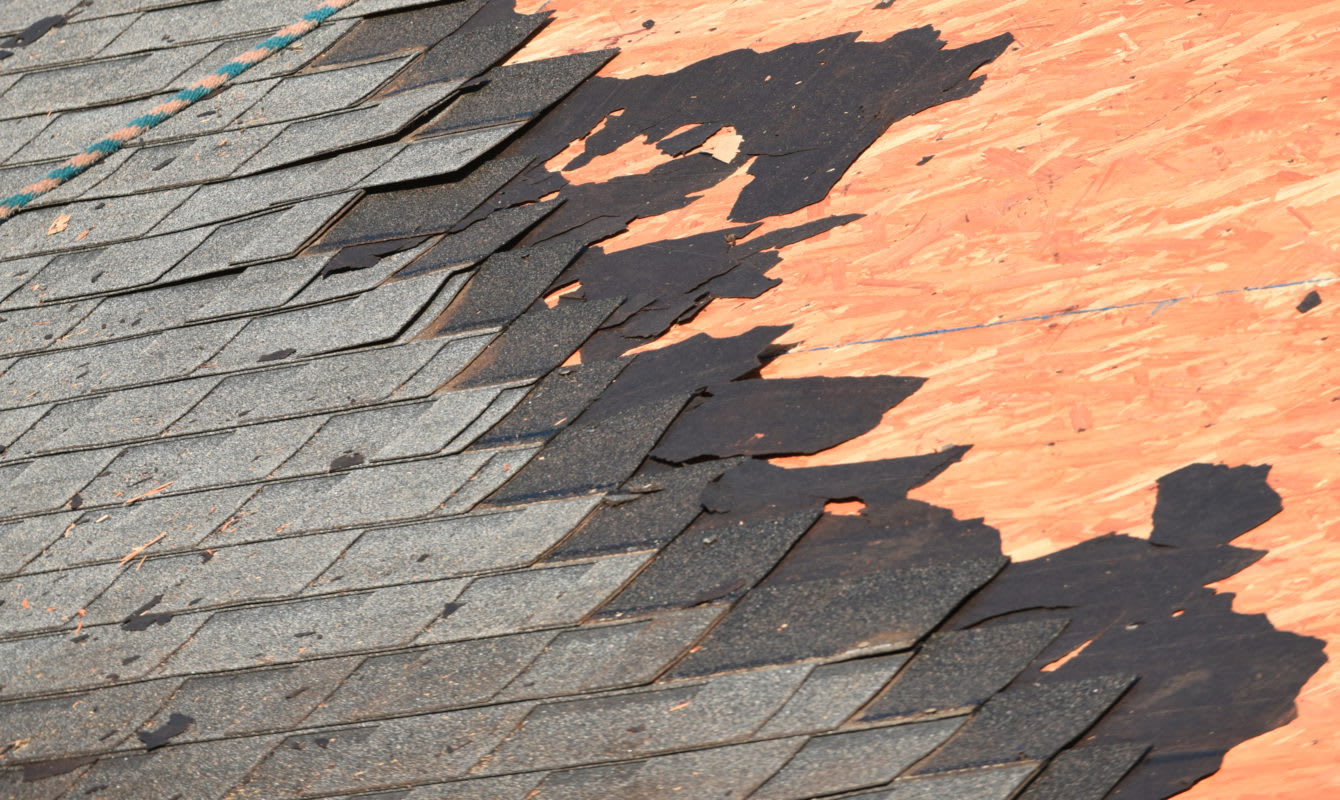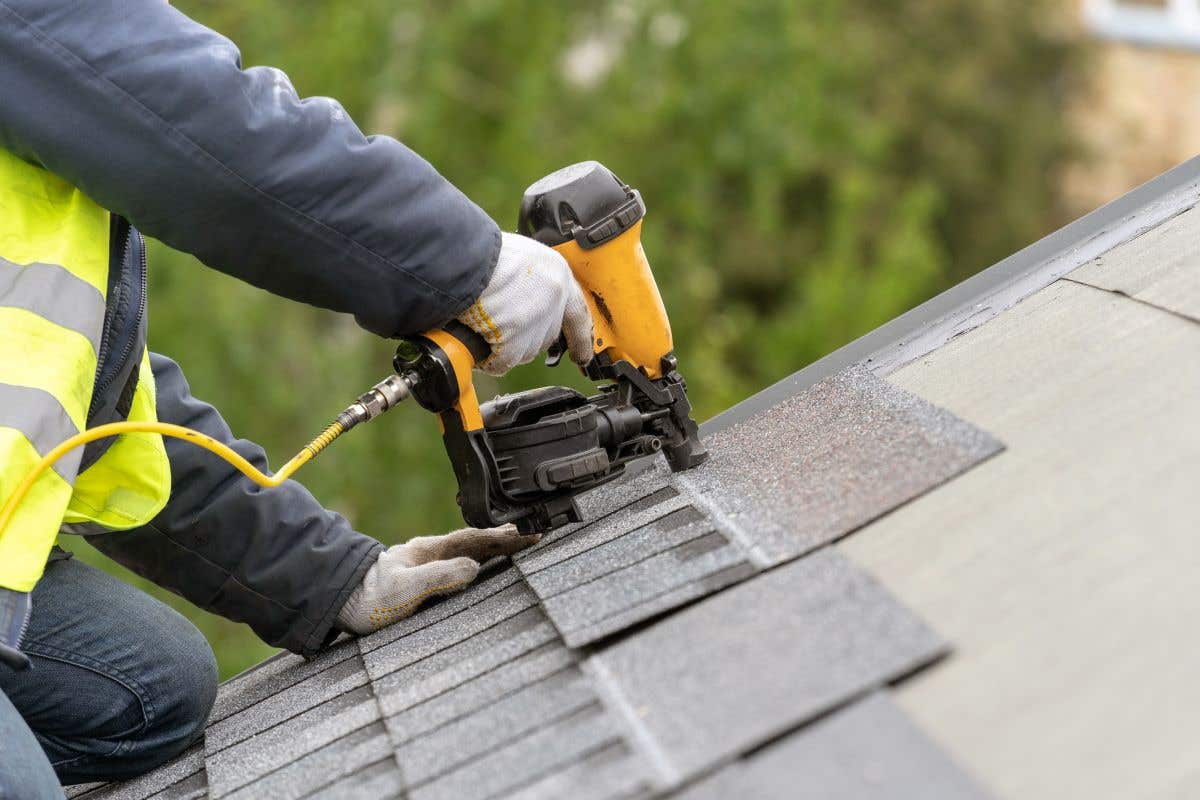Oahu Roofing: Trusted Roofing Solutions for Residences and Organizations
Recognizing the Various Kinds Of Roof Coverings: A Comprehensive Guide for Homeowners
With a selection of alternatives-- ranging from the traditional gable to the modern flat-- each kind provides one-of-a-kind advantages and obstacles that need to line up with the property owner's particular needs and ecological considerations. As we explore the ins and outs of different roof covering kinds, it comes to be noticeable that one dimension does not fit all; the right selection might amaze you.
Gable Roof Coverings
Gable roofs, identified by their triangular shape, are amongst one of the most preferred roof covering designs as a result of their simpleness and effectiveness in dropping water and snow. This style features two sloping sides that meet at a ridge, permitting for effective drainage and decreasing the danger of water buildup. The steep pitch generally associated with gable roofings enhances their capability to take care of hefty rainfall, making them ideal for numerous environments.
In enhancement to their sensible advantages, saddleback roofs supply aesthetic flexibility. They can be adjusted to numerous architectural designs, from traditional to contemporary homes. The layout can likewise accommodate extra attributes such as dormer home windows, which improve natural light and air flow in the attic room space.
Furthermore, saddleback roofs offer adequate area for insulation, adding to energy effectiveness. Home owners can select from a range of roof covering products, including asphalt roof shingles, steel, and tiles, additionally improving customization choices.
In spite of their benefits, saddleback roofs may require extra assistance in locations prone to high winds or heavy snowfall. In general, the gable roofing stays a favored selection because of its mix of performance, durability, and visual allure.
Apartment Roofs
Flat roofing systems are typically identified for their minimal layout and practical applications, especially in commercial and commercial settings (oahu roofing). These roofs feature a almost straight or straight surface, which permits for easy construction and versatile area usage. While they may lack the aesthetic allure of angled roofs, flat roofing systems supply numerous advantages, particularly in city atmospheres where taking full advantage of room is essential
Among the main advantages of flat roofs is their ease of access. Property owners can utilize the roofing space for various functions, such as roof yards, terraces, or photovoltaic panel installments. Furthermore, flat roofing systems are generally much more cost-efficient to preserve and install compared to their sloped equivalents, as they require less materials and labor.
Usual materials utilized for level roofing systems consist of built-up roof (BUR), customized bitumen, and single-ply membrane layers, each offering distinctive advantages. In general, flat roofs offer as a useful and versatile option for several homeowners and services alike.
Hip Roofs
Hip roofs are defined by their sloped sides that assemble on top, creating a ridge. This layout stands out from saddleback roofs, as all 4 sides of a hip roofing incline downwards toward the wall surfaces, giving a more steady structure. The angle of the slopes can differ, enabling convenience in architectural aesthetics and performance.
Among the key benefits of hip roofings is their capability to withstand hefty winds and negative weather condition conditions. The sloped surface areas enable far better water drain, minimizing the danger of leaks and water damages. Additionally, hip roofs provide enhanced attic space, which can be utilized for storage or even converted into comfortable areas.
Nonetheless, constructing a hip roof can be much more intricate and costly than less complex roof covering types, such as gable roofs. The extra material and labor associated with developing the slopes and making certain appropriate structural stability can cause greater expenses. In spite of these disadvantages, numerous homeowners favor hip roofings for their resilience, visual charm, and potential for energy effectiveness.
Mansard Roof Coverings
Mansard roofing systems, often recognized by their unique four-sided style, function 2 inclines on each side, with the lower incline being steeper than the upper. This architectural design, originating from France in the 17th century, is not only visually attractive however i loved this useful, as it maximizes the usable area in the upper floorings of a building. The high reduced slope permits even more clearance, making it an excellent selection for attics or loft spaces, which can be transformed into living areas.
Mansard roofs are defined by their versatility, accommodating numerous building styles, from standard to modern. They can be built with different materials, consisting of asphalt shingles, slate, or metal, providing house owners with a variety of alternatives to match their budget plans and choices. In addition, the design enables the assimilation of dormer home windows, enhancing all-natural light and air flow in the upper degrees.
Nevertheless, it is vital to take into consideration the possible downsides. Mansard roofs might require more upkeep because of the complexity of their layout, and their steep inclines can be challenging for snow and rain runoff. On the whole, mansard roofs incorporate style with practicality, making them a popular option among house owners looking for distinctive architectural attributes.
Dropped Roofing Systems
As house owners increasingly look for simpleness and performance in their architectural designs, lost roofings have arised as a prominent choice. Defined by a single sloping airplane, a shed roofing system offers a minimal visual that enhances different home styles, from modern to rustic.
Among the primary benefits of a shed roof covering is its straightforward building and construction, which commonly converts to reduce labor and product expenses. This layout enables for reliable water drain, minimizing the danger of leaks and water damage. In addition, the vertical slope provides enough room for skylights, enhancing natural light within the interior.
Lost roofing systems likewise offer adaptability in terms of use. They can be efficiently integrated into additions, garages, or outdoor frameworks like sheds and pavilions. In addition, this roof style can accommodate different roof covering products, consisting of steel, asphalt tiles, or also environment-friendly roofs, aligning with environment-friendly efforts.
Nevertheless, it is vital to take into consideration local environment conditions, this link as heavy snow lots may require adjustments to the roof's angle or structure. Overall, shed roofs provide a sensible and cosmetically pleasing option for house owners seeking to make best use of performance without endangering design.
Final Thought


Gable roofs, defined by their triangular shape, are among the most prominent roof designs due to their simpleness and efficiency in shedding water and snow. oahu roofing. The high pitch generally associated with gable roofing systems enhances their capability to deal with hefty precipitation, making them suitable for various climates
While they may see this site lack the visual appeal of pitched roof coverings, flat roofs offer countless benefits, especially in metropolitan settings where optimizing space is important.
